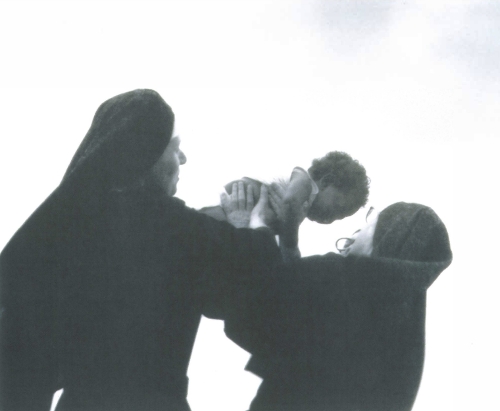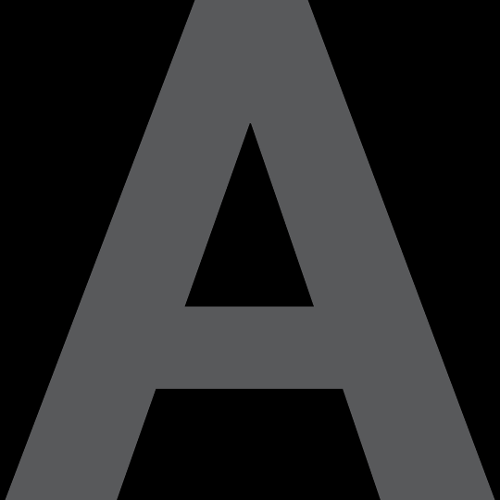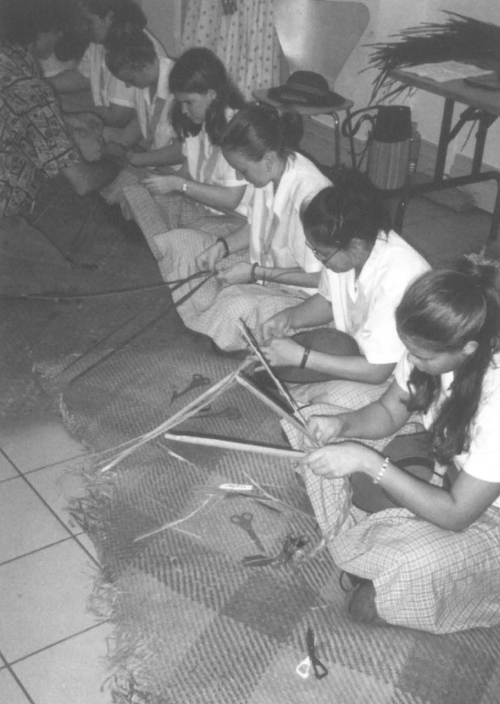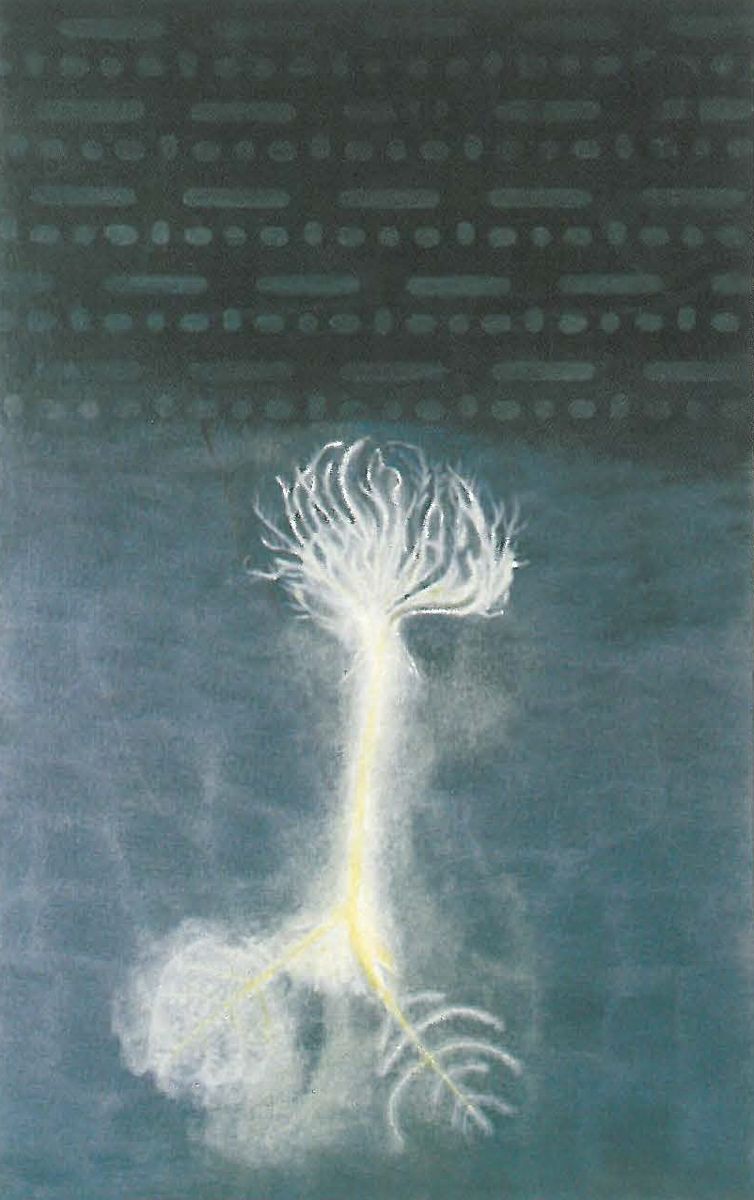
Madeleine Kelly's third solo exhibition, titled Anatomy of a Metaphor, draws on imagery from biological science. In an artist's statement that accompanies the exhibition, the artist claims that the series:
addresses issues pertaining to the perception and representation of nature, in particular focusing on the ways in which previously invisible phenomena, such as the gene, have altered and adjusted our ways of apprehending our environment and our relationship to the natural world.
Given that the series is devoted to tackling the invisible, painting may at first seem like a poor choice in a contemporary art world where the output of information technology may appear more appropriate to visualising the (subject) matter at hand. The precision of technological implements and the slick dispassionate functionalism of their products are part and parcel of the language we use to understand recent scientific explorations into the deep space of interior worlds.
However it is perhaps the potential irony of this medium of representation that gives the show its particular appeal.
The most successful images in the exhibition are both evocative and evasive. They seem to have found their forms from a resistance to the illustrative formalities of scientific 'models'. In the place of clinical analyses, we are presented with pigment that seems to suggest numen rather than the fixity of matter. In place of the desecration of the invisible, we are presented with voids of possibility. There is a sense, in these works, that the invisibility of matter may yet be restored.
It is at this point that intersections between the representations of science and those of art may yet remain meaningful. For these works are, despite the claims of their maker, ultimately about the subject matter of painting. The fugitive forms that seem to alternately congeal and dissipate as they float across the picture plane carry evidence of the imprecise sorcery of painting. The very surface of the work bears) witness to a kind of alchemy where the touch touch touch of brush filaments across wet pigment wills a corporeal surface into embodying meaning, like the persistent rubbing of Aladdin's lamp which gives rise to the spectre of endless possibilities.
Instead, in these paintings we are presented with the luminous spectres of biological investigations. They are representations of life forms that exist in mutable states – as structures that inhabit a neo-visible world where matter has not yet been firmly fixed by the taxonomies, computations and allocations of Molecular Biology and Physical Chemistry.
If late twentieth century science has been successful in revealing the gene as the factor that represents the ultimate lowest common denominator of the corporeal, then that role of painting which testifies to the presence of the unpresentable may not yet be exhausted.
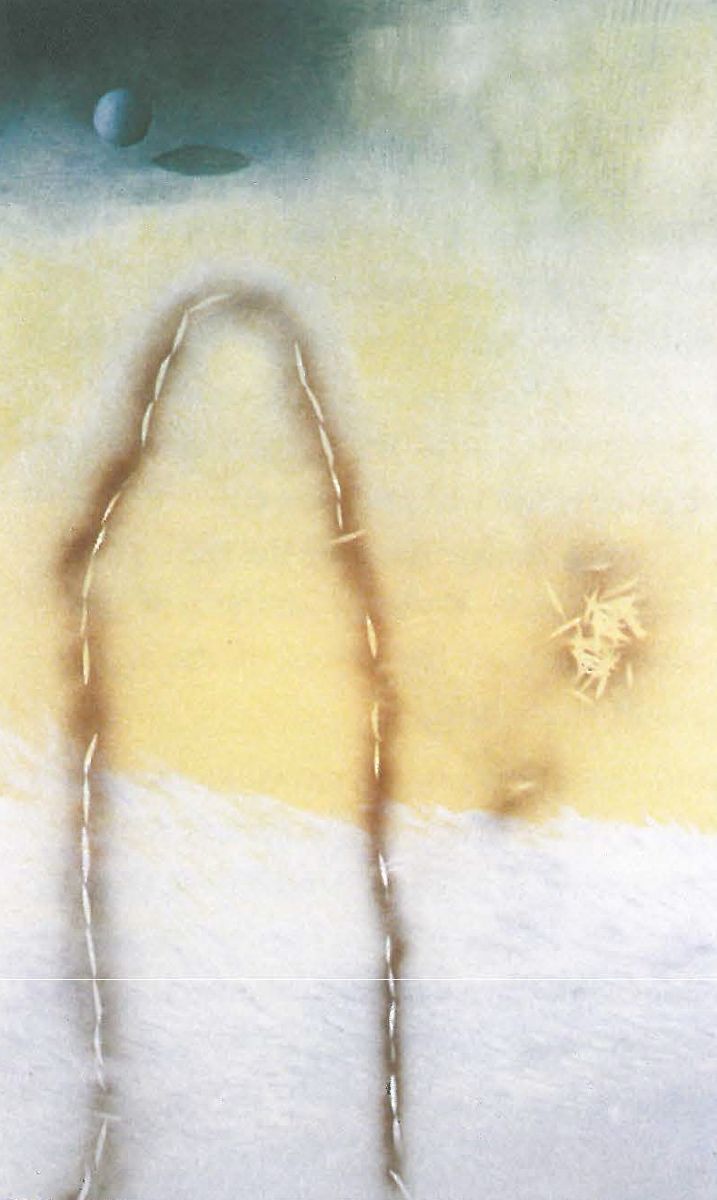
In Illuminating the Answer Vacuum II an ombre yellow ground has been sponged onto the surface. Hovering above this self-defined picture-plane, but not suspended, is a form that vacillates between suggesting a necklace and a figurative silhouette. The string of connected beads has been fabricated by spray painting across a delicately arranged semicircle of native leaves. To the side of this arrangement lies a more haphazard form outlining the place to which the leaf-stencils were blown after the spraying. Here the form of the work has been articulated through a coming into contact with the 'real' world. The subsequent imagery is a result of the collision (however delicate) of this world with the represented world.
Above the necklace form is the more weighty, delineated form of a sphere – the only darkened corner of the otherwise ethereal canvas. The 'authenticity' of this image – as a rendered three-dimensional form in space – inherits a different pedigree from those shapes that have been delineated through the process of painting rather than conjured by the will of the painter. And yet this form clings to its corner as if hovering on the edge of a more causal reality. As if the transient processes of disappearance have been restored to subjectivity.
Ours is an era where demands for verification and quantification straiten and constrict the ways in which we experience everyday life. Both inner worlds as well as worlds beyond our own are documented, made visible, re-presented, codified and analysed. The sheer implausibility of painting in this visually overloaded ecosystem may yet offer refuge for that which can not be shown.





